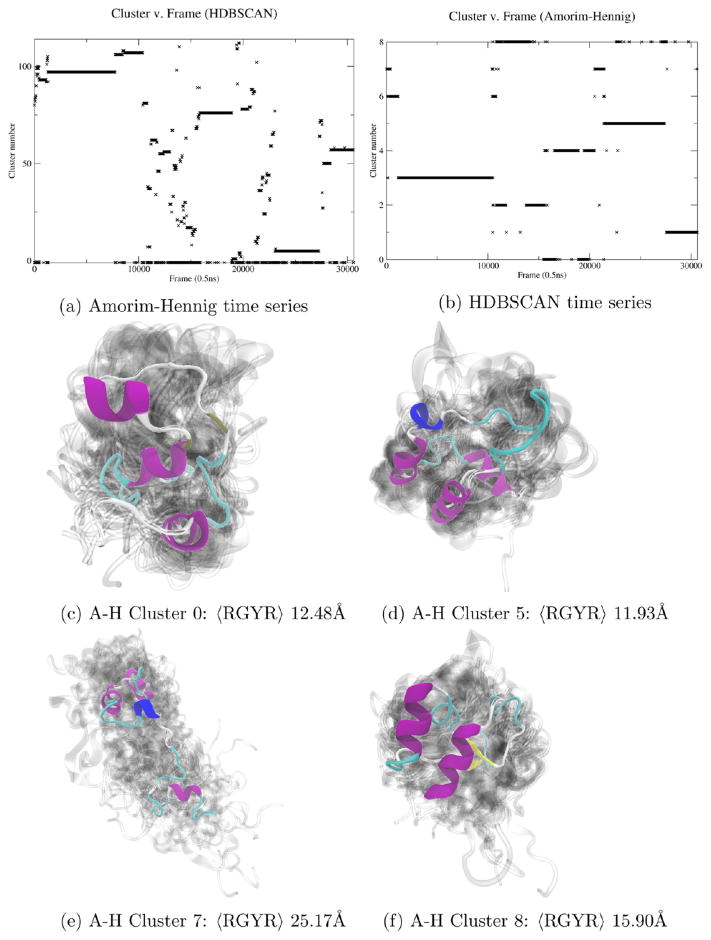Figure 4.
(a) Amorim–Hennig divided this folding simulation of villin headpiece into nine clusters (b) representing various states of foldedness (c–f). All visualized clusters are from Amorim–Hennig clustering. Cluster 7 (e) is the most compact, while cluster 5 is the least (d). Comparing clusters 5 (d), 7 (e), and 8 (f), we see additional searching for a final, folded conformation. HDBSCAN (b) also detected multiple stable structures, which upon visualization turned out to be stable folding intermediates (Supporting Information, Figure S3).

